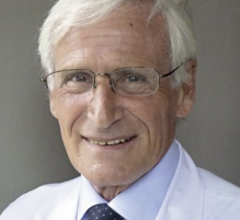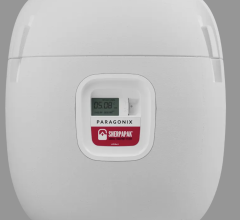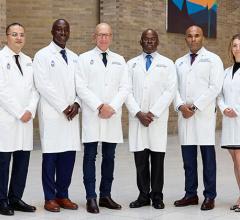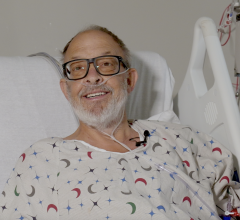
The Holy Grail sought for more than two decades by interventional cardiology has been proof that minimally invasive, percutaneous coronary intervention (PCI) procedures can perform as well or better than the gold-standard of coronary artery bypass graft surgery (CABG).
It’s a no-brainer that a hole smaller than the diameter of a pencil offers fewer complications and faster recovery than cracking a patient’s chest, possibly placing them on bypass and cutting and pasting various vessels. However, the issue for PCI has been its durability over time and major adverse cardiovascular or cerebrovascular event (MACCE) rates in complex patients.
In 2008, the results of the landmark SYNTAX trial were unveiled. It was the first large trial comparing use of a drug-eluting stent (the Taxus Express paclitaxel-eluting stent) to CABG in patients with left main and three-vessel disease. The data showed a slight advantage for CABG in rates of death or myocardial infarction (MI) in average patients, but for lesions of greater complexity, there was a significant increase in MACCE rates for PCI patients.
In 2009, data from the SPIRIT IV trial comparing Abbott’s Xience V everolimus-eluting stent to the Taxus Express stent showed the Xience had better patient outcomes. This prompted many interventional cardiology experts to predict a SYNTAX trial using the Xience likely would have offered results favoring stenting over CABG. That proposed rematch is now on.
In October, Abbott began enrolling U.S. patients in the EXCEL (Evaluation of Xience Prime or Xience V versus CABG for Effectiveness of Left Main Revascularization) trial. EXCEL is a global, prospective, multi-center, randomized trial to assess the safety and efficacy of the Xience Prime/Xience V coronary stents compared to CABG in select patients with unprotected left main coronary artery disease. Surgery traditionally has been the standard treatment for left main disease, with coronary stenting reserved only for patients at high risk for surgery who are “protected” by a previous bypass graft to at least one of the two major coronary arteries that branch off the left main artery. The EXCEL trial will evaluate unprotected patients with left main disease who have not received grafts to these arteries to determine whether coronary stenting can be an alternative to bypass surgery in these patients. The trial is being led by a multi-disciplinary team of physician specialists representing both surgeons and cardiologists.
“EXCEL will examine the differences between stenting and surgery in a select patient population,” said Gregg W. Stone, M.D., professor of medicine at Columbia University Medical Center and New York-Presbyterian Hospital and a principal investigator of the EXCEL trial. “The EXCEL trial, which is the largest study to date to randomize patients with left main disease to either coronary stenting or surgery, is designed to answer whether one of these therapies is preferred in these high-risk patients, thus helping physicians determine appropriate treatment choices in patients with left main disease.”
The EXCEL trial will enroll more than 2,600 patients at up to 165 medical centers in 18 countries from regions across the globe, including the United States, Europe, Asia Pacific, Canada and Latin America. Select patients who have unprotected left main disease will be randomized to receive a drug-eluting stent or CABG. The primary endpoint of the study is the composite measure of all-cause mortality, myocardial infarction or stroke at a median follow-up duration of three years, with all randomized patients having reached a minimum of two years’ followup.
"With the advancement of technology and expertise, coronary stenting might have potential as an alternative to coronary bypass surgery for select patients with left main disease," said Joseph Sabik, M.D., chairman, Department of Thoracic and Cardiovascular Surgery, Cleveland Clinic, and a principal investigator of the EXCEL trial. "Although surgery has traditionally been the standard of care in patients with left main disease, the goal of the EXCEL trial is to evaluate Xience as a potential new treatment option for select patients with this high-risk condition."
In addition to Sabik and Stone, the following are also principal investigators of the EXCEL trial: Patrick W. Serruys, M.D., Ph.D., professor of interventional cardiology; and A. Pieter Kappetein, M.D., Ph.D., associate professor of Cardio-Thoracic Surgery, both at the Thoraxcentre, Erasmus Medical Center, Rotterdam, the Netherlands.
Like SYNTAX, the EXCEL trial will be a closely followed, pivotal trial that may offer a paradigm shift in how cardiologists treat complicated coronary patients. If the data show the outcome many expect (and presumably the reason why Abbott is willing to put money where its mouth is), coronary stenting will see a brighter future with increased procedural volumes and fewer CABG surgeries.
Abbott has good reason to fund this very expensive trial. In addition to having the world’s current market-leading stent, which will be featured in this trial, it also has the first commercialized bioresorbable stent – Absorb. Early comparisons show a better safety profile for the Absorb stent versus the Xience V. If that trend continues, and EXCEL shows stenting to be superior to CABG, Abbott may be guaranteed stent market domination through the next decade.


 March 20, 2024
March 20, 2024 








